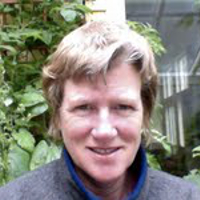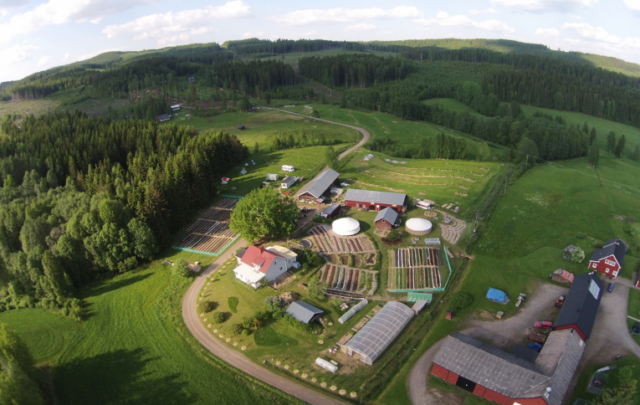Odum, et al., 1995 Zonal Organization of Cities and Environment
Many people have the misguided belief that cities are energy efficient. Cities compared to other environments are often more efficient with respect to transportation, because fuel use actually drops off in city centers due to the availability of mass transit. But the embodied emergy as a whole in the infrastructure, people, and information in cities suggests the opposite. Cities are actually energy hogs, that concentrate energy. In a future of waning energy, are our biggest cities too big to fail? What size city is sustainable?
This post is a follow-up to last week’s post about our dialogue about big cities and descent. Examples are everywhere this week of people projecting their fears on long-deferred retribution by Mother Nature and the need to wield war using our technological tools to maintain our cities. Sandy is evidence of a heating world, with bigger swings in weather and a hurricane one week, a northeaster the next. There have been a flood of victorious articles suggesting that I told you so about climate change. Even though Sandy was only category 1 or 2 storm, it was over a very broad area with a very high total kinetic energy because of a hot ocean, even very late in hurricane season in a season with many storms. But the impacts of Sandy were complicated by the population density in the northeast. Perhaps The Weather Channel needs to make up a new metric for landfall in complex, urban settings. The more high-tech complexity we have, the more widespread, serious, and long-term the impacts. These scenarios will be increasingly frequent in the future, as we turn the lights out in a room with too many people.
 While climate change is being touted as the end of life as we know it, a simple power outage illustrates the dangers of too many people in a complex, energy-dependent society. A cacophony of support for climate change displaces the true problem, which is too many people living in complex urban situations with deferred maintenance and limited surplus energy when catastrophe hits. While most environmentalists fear what happens when we keep Business as Usual (BAU) moving forward, what happens when we cannot keep BAU moving forward? If the storm had been worse, what would have been the population’s need for water, and what would have happened to nuclear power plants? Possibilities of violence go up–where is the tipping point for that? Revolution, war, and riots are off of our radar, which has narrowed to its smallest focus to protect our psyches from multiple threats looming on the horizon. As blackouts and gas rationing go forward in the northeast, people will begin to see the energy that drives their world in all of its stepped hierarchy. We operate under the false notion that people in cities use little energy. We are so steeped in a hierarchy of surplus energy in our society that we will not understand energy until we begin to suffer its absence.
While climate change is being touted as the end of life as we know it, a simple power outage illustrates the dangers of too many people in a complex, energy-dependent society. A cacophony of support for climate change displaces the true problem, which is too many people living in complex urban situations with deferred maintenance and limited surplus energy when catastrophe hits. While most environmentalists fear what happens when we keep Business as Usual (BAU) moving forward, what happens when we cannot keep BAU moving forward? If the storm had been worse, what would have been the population’s need for water, and what would have happened to nuclear power plants? Possibilities of violence go up–where is the tipping point for that? Revolution, war, and riots are off of our radar, which has narrowed to its smallest focus to protect our psyches from multiple threats looming on the horizon. As blackouts and gas rationing go forward in the northeast, people will begin to see the energy that drives their world in all of its stepped hierarchy. We operate under the false notion that people in cities use little energy. We are so steeped in a hierarchy of surplus energy in our society that we will not understand energy until we begin to suffer its absence.
Hospitals as a case study for complexity with removal of power
Electric power plants supply a form of energy intermediate in transformity between the fuels and the information systems of commerce, finance, universities, hospitals, government, city management, and residences (Odum & Odum, 2001, p. 203). Hospitals are one of the most energy intensive constructs of modern society, so they are a microcosm of the impacts of a blackout. In one of the few early reports this week on the devastation in hospitals in New York City (NYC), three hospitals and four nursing homes in NYC were forced to evacuate about 1000 patients after the storm revealed weaknesses due to reliance on complexity. Reportedly, no lives were lost, although several patients were too big to be evacuated down stairwells, so they were left behind. Becoming too big may result in unforeseen consequences.
“There are more and more layers of complexity and challenge with this kind of large-scale disaster,” says Irwin Redlener, director of the National Center for Disaster Preparedness at Columbia University in New York. “The experience before during and after Sandy will inspire us to rethink large-scale disaster planning.” . . . . A “new vulnerability” faces coastal cities, says Tricia Wachtendorf, associate director of Disaster Research Center at the University of Delaware. Older hospitals near shorelines need to be re-evaluated for critical care units and undergo costly upgrades (USA Today, Lloyd, Nov. 7, 2012).
nukeprofessional.blogspot.com:2012:04:clunkers- everywhere (SteveO) Also here
Population will continue to grow, although perhaps not in our largest cities. We will have more scenarios like this one repeated with future catastrophes. What does this mean for issues such as electronic health records, since the lack of access was part of the decision to abandon ship? I imagine the inability to document or communicate added to the confusion of the disaster. Are we really supposed to believe that no deaths resulted from the evacuations? Are we so arrogant that we would design a healthcare system that demands a consistent supply of electricity for critical functions? Can we really disaster-proof large, urban, high-tech hospitals, and is the coastline the issue or is it the joint density of the population along with the interconnected complexity? Is the same true of other essential systems such as nuclear power?
 Here is yet one more example of our mass projection of our fears on climate change when the real issue is growth. Replace the words climate change with growth in any of a myriad of articles this week to illuminate the true nature of the problem. People who politicize climate as the priority problem suffer from a failure to think big about what happens as energy inputs begin to recede for our complex civilization. Everyone worries about the continued growth of the system, when the sudden cessation could be just as deadly but more sudden, due to the overshoot of both population and complexity.
Here is yet one more example of our mass projection of our fears on climate change when the real issue is growth. Replace the words climate change with growth in any of a myriad of articles this week to illuminate the true nature of the problem. People who politicize climate as the priority problem suffer from a failure to think big about what happens as energy inputs begin to recede for our complex civilization. Everyone worries about the continued growth of the system, when the sudden cessation could be just as deadly but more sudden, due to the overshoot of both population and complexity.
What principles apply here?
Many systems principles apply to the issue of urban density and descent. A friend asked me this week, “Why are the cities there in the first place, and what is the best place for cities?” Cities were historically built in convergence zones where good soil and water converged with natural environmental energy from mountains, rivers, and ports to create transportation corridors and an energetic basis for larger cities (Odum, 2007). Cities organize regions by receiving fossil fuel and material inputs that converge, while goods, services, investments, wastes, and controls are returned to the region. Traditionally cities were less than 1 million people in size before the fossil fuel era. NYC in particular has disconnected in part from its region, due to the extreme inequity created by global financial center status. In the near future, cities will become less concentrated and smaller. Commuting will become more difficult. Specialized jobs will disappear as the economy relocalizes. Populations will disperse to smaller cities and towns. That transition may be driven in part by loss of financial jobs in city centers.
Emergy signature of Rome; (Ascione et al., 2009, p. 245) ”Environmental driving forces of urban growth and development: An emergy-based assessment of the city of Rome, Italy”
Base run 1972 “Limits to Growth”, Hall and Day, “Revisiting LTG After PO”
As we descend, capitalism’s profit motive will wane. Is anything still growing that our wall street businessmen can make a profit from? Our financiers are looking for more fodder to churn, since there is no growth in energy/expansion anymore. The only growth industries from here on out may be births, deaths, and pollution. Is harnessing our waste stream the only possible source of new income streams? If we prioritize climate change and expand carbon credits or battle climate through engineering projects, we feed the machine that drives expansion and economic growth. You have to wonder whether Mother Nature targeted Wall Street directly as retribution. Drowned stock certificates and flooded Verizon buildings that are hubs of communication revealed the problems of centralized, digitized complexity–the center cannot hold. When the dollar goes bust, what happens to financial sector in NYC, and what will that do to their economy?
How to reorganize cities
(from Huang, Lai, & Lee, 2001) Taipei, click to enlarge
So what is a sustainably-sized city? That is a difficult question to answer, and the answer will change over time as energy wanes. But the answer is partly dependent on energy availability and degree of surplus, which may not be uniform. Energy surplus in the US will depend on how much we waste on bad policies and how long the petrodollar that allows us to purchase foreign oil remains ascendant. Recent politics and our almost universal political goal of returning to economic growth suggest that we will use our surpluses unwisely so that when the petrodollar falls, we are left high and dry.
 As time goes on, failures of complexity and the inability to recover in dense settings will increase. Kunstler was wrong about the relative weakness of suburbia in descent compared to cities. Because cities concentrate energy in increasingly empowered zones, they actually gobble energy. Catastrophes from the larger scale will increase slowly due to increasing pollution, but the impacts will increase rapidly in big cities as less energy is available for maintenance and recovery. Eventually, electricity could replace money as the new dividing line between haves and have nots. The Rapture folks have one story about who will be left behind. Perhaps it will be those without surplus energy to wield who are left behind instead. The country is evolving into two polarized political parties who have difficulty communicating. The red states are generally more rural and less densely populated. The blue states are more urban. What does this mean in a future where urban populations may begin to disperse? Our energy basis is a guiding principle for everything, including politics.
As time goes on, failures of complexity and the inability to recover in dense settings will increase. Kunstler was wrong about the relative weakness of suburbia in descent compared to cities. Because cities concentrate energy in increasingly empowered zones, they actually gobble energy. Catastrophes from the larger scale will increase slowly due to increasing pollution, but the impacts will increase rapidly in big cities as less energy is available for maintenance and recovery. Eventually, electricity could replace money as the new dividing line between haves and have nots. The Rapture folks have one story about who will be left behind. Perhaps it will be those without surplus energy to wield who are left behind instead. The country is evolving into two polarized political parties who have difficulty communicating. The red states are generally more rural and less densely populated. The blue states are more urban. What does this mean in a future where urban populations may begin to disperse? Our energy basis is a guiding principle for everything, including politics.
Ray Troll, 1988, Cutthroat Businessmen
We need to cut our expanding income disparity in descent if we are to avoid catastrophic revolution. We could take the empty houses whose mortgages are held by government sponsored entities (GSEs) such as Fannie Mae and Freddie Mac, and give the housing to displaced homeless. The government is going to become the landlord of last resort in the future anyway. Perhaps it already is–doesn’t the government hold most of those mortgages through GSEs? Jobs will continue to disappear, and the loss of financial jobs on Wall Street will hollow out NYC. There is already talk of finance jobs disappearing in London. When the derivatives blow up, as they eventually will, there will be fewer jobs to support the population density in places like NYC.
We need to stop building new buildings and spend extra money on maintaining deteriorating infrastructure. We can decentralize organizational hierarchy of cities, and find novel ways to use vacant buildings. As cities deconstruct, add green space by depaving. Plan for the elimination of private cars with a city center based on human-powered transport and mass transit. As urban centers hollow out, shut down and decommission nuclear power plants that are dangerously vulnerable to all sorts of threats. Why worry about climate change when we are only 100 minutes away from permanent regional devastation from a meltdown as chaos of devolving complexity increases?
Wastes will become an increasing problem as energy inputs wane. As NYC grew, wastes such as horse manure became a problem in the late 1800s briefly, before we transitioned to autos and a fossil-fuel based society where wastes could be transported easily, allowing cities to grow larger. Wastes will become a problem again in descent as our ability to ship wastes away wanes. In the short-term, what are they going to do with all the storm debris?
We need to stop fighting nature. The more people we have, the more we will attempt to build on shifting, migratory dunes, and wetlands. Barrier islands are meant to shift–so stop beach renewal. Stop national flood insurance. Let the private markets offer flood insurance if they think it’s workable. Do not subsidize rebuilding at sea level or in wetlands. Stop trying to hold back the tides with engineered barriers and other devices, which are costly short-term devices that shift problems and add to city energy costs. Adaptation means relocalizing away from dense urban centers and cities on barrier islands developed during a period of relative hurricane quiet and subsidies through flood insurance.
 So what can you take from this as an individual? If you live in a dense urban setting, when catastrophe visits, the problems will multiply instead of add, as complex, digitized, just-in-time cities combine with an unprepared populace heavily reliant on electricity. Consider your reliance on others for electricity, plus food, water, plumbing, heat, and transportation. Consider whether you might want to relocate, especially if your job is dependent on the financial, insurance, or real estate sectors. What would have happened in a more intense storm, or a longer outage? Are you willing to be reliant on others during crises when there are too many people and too much complexity to deal with? As we descend, beating the rush on adaptation will have many advantages. Make sure you have a back up source of heat (wood), a backup form of transportation (bike), and a backup form of food (a camp stove, stored water, and cans of food). Finally, consider your attitudes about growth, progress, expansion, and wealth. A change in energy availability will change our attitudes about these values.
So what can you take from this as an individual? If you live in a dense urban setting, when catastrophe visits, the problems will multiply instead of add, as complex, digitized, just-in-time cities combine with an unprepared populace heavily reliant on electricity. Consider your reliance on others for electricity, plus food, water, plumbing, heat, and transportation. Consider whether you might want to relocate, especially if your job is dependent on the financial, insurance, or real estate sectors. What would have happened in a more intense storm, or a longer outage? Are you willing to be reliant on others during crises when there are too many people and too much complexity to deal with? As we descend, beating the rush on adaptation will have many advantages. Make sure you have a back up source of heat (wood), a backup form of transportation (bike), and a backup form of food (a camp stove, stored water, and cans of food). Finally, consider your attitudes about growth, progress, expansion, and wealth. A change in energy availability will change our attitudes about these values.






